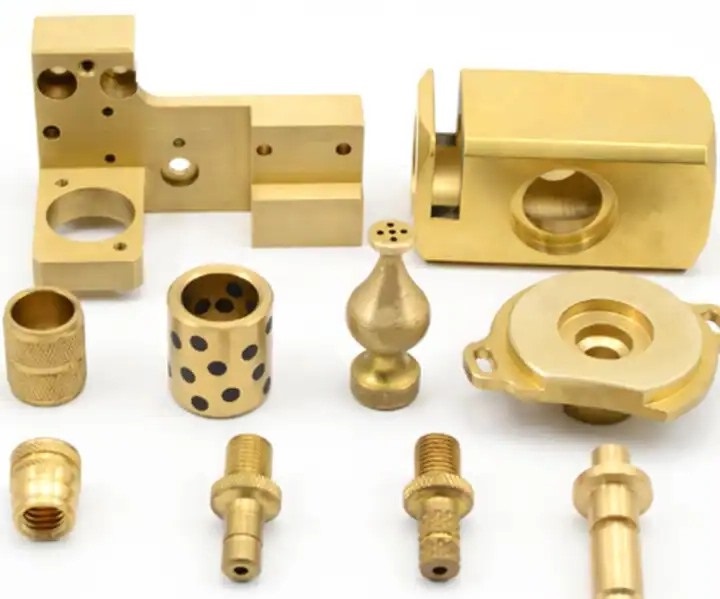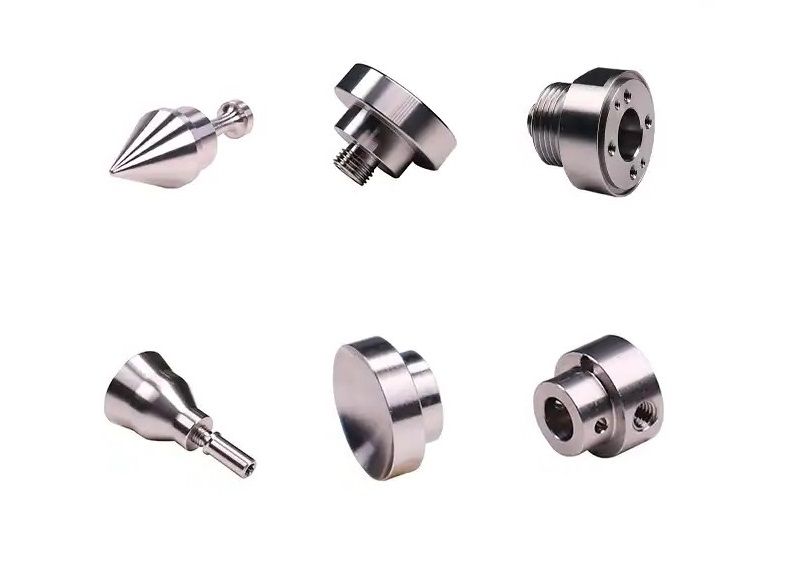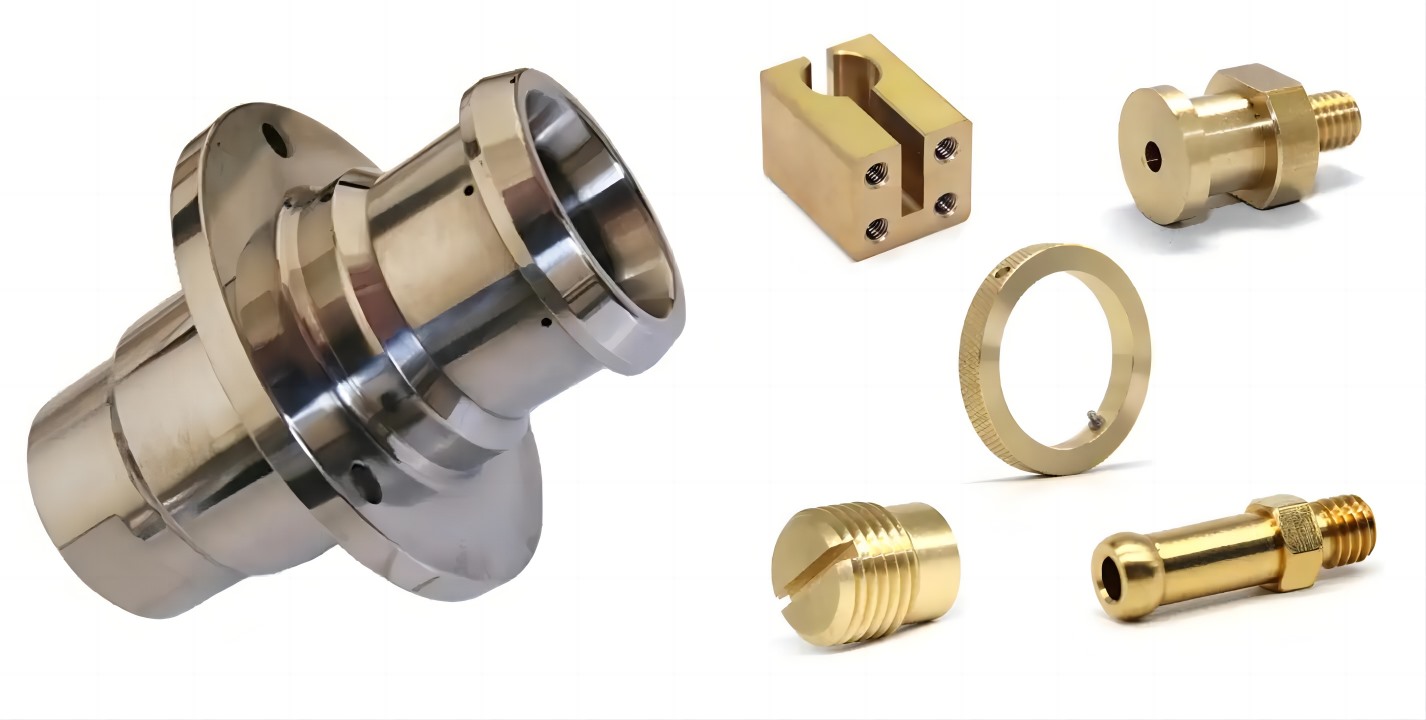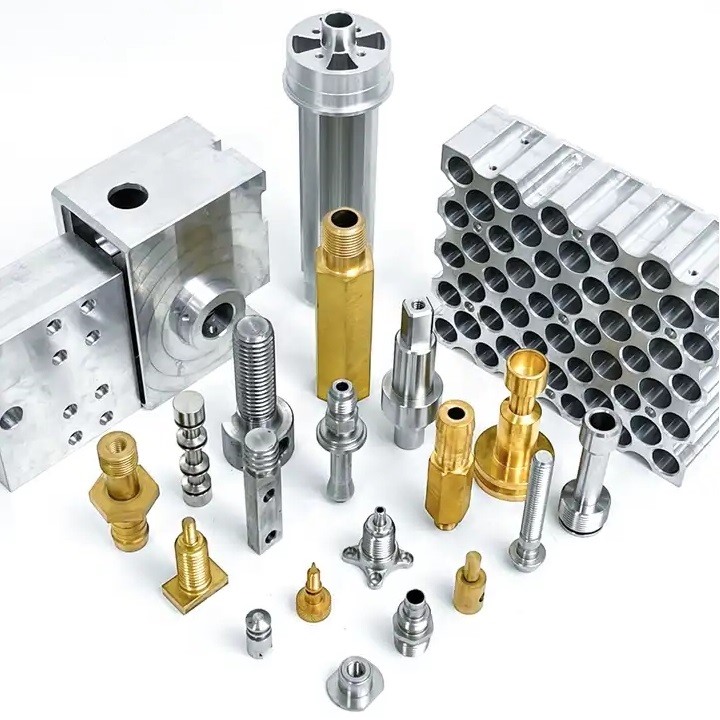Brass vs Stainless Steel: A Comparative Guide
 Jul 14,2023
Jul 14,2023

Considering history of civilization or discussing current scenario, brasses and steels are among the most utilized materials at globally usage level as well as at industrial level. Stainless Steel are alloys of iron composed of carbon, usually as main alloying elements in some cases. Silicon, magnesium, manganese, molybdenum, nickel and chromium are other alloying elements used in steels as per required properties. Steels are famous for good mechanical properties and high heat resistance.
On the other hand, brass is an alloy of zinc and copper with combination of malleability, corrosion resistance and high electrical conductivity. This article will provide an insight to the reader to develop the understanding of differences and similarities between brass and steel to make an optimized and most appropriate choice of material for particular application. China Tuofa will provide detailed explanations of the difference between brass and stainless steel for any engineer or designer interested in materials.
Table of Contents
Stainless Steel Is Made Up Of Which Metals
What Is The Difference Between Brass And Stainless Steel
Is Brass Better Than Stainless Steel
Why Choose Toufa For Custom Brass And Stainless Steel Parts
Brass Is Made Of Which Metal
Brass is composed of copper (Cu) and Zinc (Zn). Zn is added in the copper to alter the properties, as copper is very soft, and addition of zinc improves mechanical properties. Various brass alloys are developed by using the zinc in the range of 5-45% which offer different combination of mechanical, electrical and corrosion properties.
Does brass conduct electricity
Bass is considered as a good conductor of electricity. Brass is mainly composed of copper which is a good conductor of electricity due to the presence of free electrons. Variation in electrical conductivity is present as weight percentage of zinc or other alloying elements vary. Thermal conductivity of brass at room temperature is 28% International annealed copper standard. It is used in terminals, connectors and electrical appliances.

Thermal expansion of brass
Linear Temperature Expansion Coefficient (CTE) of brass is 18-19 (10-6 m/(m °C)). CTE slightly vary with change in composition in different grades of brass and mentioned value of CTE is the average value. Thermal conductivity of brass is 64 [BTU/(hr·ft⋅°F)] or 111 [W/m-K].
Brass fixtures
Brass offers a good combination of properties usually desired for fixture application and considered as one of the most desired material for particular application. It is corrosion resistant and used in plumbing where moisture or water exposure is concerned. Moreover, it is durable, aesthetically pleasing and possess good machinability. It is also used in door locks, hinges and handles and offer low friction.
Brass railroad locks
In history, brass was used as an important material for the production of railroad locks which are used for security of railway singles, track recode, cabinet for proper railway operations. Later on, brasses became obsolete for this application and initially cast iron replaced it and then steel.
Stainless Steel Is Made Up Of Which Metals
Stainless steels are mainly composed of iron and chromium. Other alloying elements are also added to achieve required properties such as nickel, molybdenum, copper, magnesium etc. Chromium is the key alloying element which makes steel, stainless. It form a thin layer of chromium oxide on the surface which resist it from further oxidation and protect it from corrosion. Carbon is another important alloying element and improves mechanical properties. Nickel is also added to increase toughness, strength and corrosion resistance. Manganese is added to improve mechanical properties along with welding and forming capability of the material.

How to tell if metal is stainless steel
While considering the appearances, it is silver-gray and having shinny and lustrous to dull-matt finish. Most stainless steels are non-magnetic but few exhibit slight magnetic properties. Austenitic stainless steel is generally non-magnetic. It is rust free and cannot easily corrode. Also, acid test can be conducted to examine whether the material is stainless steel or not. Drip a drop of dilute nitric acid on the stainless steel, if it won’t react then it is stainless steel.
Stainless steel watch case
Due to exceptional properties of stainless steel regarding corrosion resistance and lustrous appearance, it is considered as a top class choice for stainless steel watch cases. It is durable due to good wear and tear properties and considerably low rate of skin irritation by using this material. Stainless steel is extensively used in watch cases and quite popular in this application.
Is stainless steel expensive
Due to the presence of high concentration of expensive element chromium, price of stainless steels relatively higher than conventional steels. Most importantly, it is low maintenance and has ability to offer high corrosion resistance by making a strong protective layer. No painting or coating is required. It is economical when it is used in service because of its durability, good mechanical properties and corrosion resistance. It is an affordable material and is not a precious material like gold.
Try Tuofa Now!
Send drawings to info@tuofa-cncmachining.com
China Tuofa Engineer Support Team
Real human quotes are more accurate than software quotes
What Is The Difference Between Brass And Stainless Steel
Basic difference between stainless steel and brass is the composition as it is already mentioned that base metal of stainless steel is iron and brass has iron. Different set of properties are offered by both alloys which is discussed below;
Is brass malleable
Brass possess good malleability which indicated that the plastic deformation of this material is easy and can be converted into tubes, sheets and wires without breaking/cracking. Brass is more malleable than steels.
Melting point
Melting point of stainless steels is 1200-1300 °C and brass has 913-1082 °C. Brass has lower melting point than steels.
Is brass harder than steel
Brass is fairly harder by attaining 40-90 Rockwell H hardness. On the other hand steel has 64-68 HRC. Hence, steel is harder than brass. Hardened steel has higher hardness among steels.

Is brass stronger than steel
Ultimate tensile strength of 304 grade of stainless steel is approximately 505 MPa and brass has 338-469 MPa. So, steel is stronger than brass.
Is brass heavier than steel
No, steel is slightly lighter than brass. Suppose a component of same dimensions and size are made up of brass and steel. Steel component will be heavier than brass due to higher density of steel. As density of steel is 7.8g/cm3 and brass has 8.73 g/cm3.
Bass and steel corrosion
Steel offer superior corrosion resistance than brass. As, steel has chromium content in 10-11 wt. % which improved its corrosion resistance efficiently and effectively. Moreover, steels are used in marine environment whereas brass has Zinc which can be leeched out in the presence of certain alkaline condition and salty water.
Does brass rust outside
Yes, brass can rust if it is exposed to sea water or salt contain water but it is commonly used outdoor applications due to its good corrosion resistance properties. If corrosion resistance is the concern than steel is more suitable than brass.
Price
While considering the cost analysis, stainless steels are expensive than brasses. Brasses are an affordable choice when good corrosion resistance, strength and durability is required with low budget. Raw steel is cheaper than raw brass. As steel, required multiple number of steps during manufacturing and processing along with different alloying elements and heat treatments, its cost increases as compared to brass.
Flashier and more versatile
Bass is flashier and versatile and have lustrous appearance. Brass has warm hue with golden color and looks appealing and is used in jewelry, musical instruments and plumbing. Steel is more versatile and mostly used in architectural and constructional applications along with daily used products.
Brass vs stainless steel machining
Bras has better machining than steel due to relatively low hardness and good chip formation. Also, tool life is increased due to less wearing of cutting too. Brass also has high heat dissipation due to high thermal conductivity than steel. Learn more about brass machining services.
Stainless steel is more challenging to machine, especially the harder grades. It requires greater cutting forces and causes more tool wear. Learn more about stainless steel machining service.
Is brass better than stainless steel for water?
Stainless steel is better in water than brass. Valves are usually preferred to be manufactured by steel instead of brass as it has bad corrosion resistance in water. High pressure water should not be used in value manufactured from stainless steel.
Brass VS stainless steel Chart
|
Sr. no. |
Properties |
Brass |
Steel |
|
1. |
Strength |
Slightly low |
Slightly high |
|
2. |
Hardness |
Slightly low |
Slightly high |
|
3. |
Electrical conductivity |
Good |
low |
|
4. |
Heat resistance |
No |
Good |
|
5. |
Corrosion resistance |
Good |
Excellent |
|
6. |
Density |
Slightly high |
Slightly low |
Uses
Brass and stainless steels have number of applications and few of them are given below in a comparison manner;

Cookware
Stainless steels are extensively used for cookware in comparison with brass. Brasses are not recommended for cooking food although it has a very good heat conductivity. Brass can readily react with acids or salts when cooking is carried out in brass utensil. Eating from brass plates is relatively less dangerous than cooking in it. Stainless steels are better than brass for cookware application. Stainless steel cookware is hard to scratch and can’t react with acidic or alkaline food so it is safe for health.
Jewelry
Brass is used in jewelry and offer aesthetically appealing look. Brass plated jewelry is also very famous. Brass jewelry is durable and affordable. Steel jewelry is also in market which is more durable than brass jewelry but relatively more expensive. Brass jewelry is also not recommended for sensitive skin people as it has tendency to react or cause allergy. On the other hand, steel is not known for causing any sort of allergies [30].
Brass vs stainless steel pipe screens
Steel pipe screens are better than brass pipe screens as steel offer high wear and tear resistance and give excellent filtration without clogging the screen. Also, steel pipe screen is expensive than brass pipe screen but its design and capacity of working efficiently make it worth keeping.
Brass faucet vs stainless steel
Both materials are utilized in plumbing due to high wear and tear properties, low friction and good corrosion resistance. If corrosion resistance in plumbing is particularly considered than stainless steel offer better corrosion resistance than brass due to the presence of high chromium content.
Steel vs brass casings
Brass provides better casing to the ammunition than steel casing due to high fitting and sealing. Comparatively higher malleability of brass makes it more suitable casing than steel by superior attainment of sealing.
Is Brass Better Than Stainless Steel
It entirely depends on the required properties of the particular application. If high thermal conductivity or electrical conductivity is required, brass is more suitable. Brass also offer good mechanical properties so is the case with stainless steel. Steel has superior heat resistance properties in comparison with brass. Corrosion resistance of steel is better than brass.
Brass VS stainless steel fitting
Both alloys, offer high durability and good wear and tear resistance along with good corrosion resistance. Good mechanical properties are offered by both alloys. Corrosion resistance of stainless steel is better than brass.
Advantages of Brass
Machinability: Brass is one of the easiest materials to machine, especially when compared to steel or aluminum. This ease of machining allows for high precision and complex shapes, making it ideal for intricate components.
Corrosion Resistance: Brass exhibits excellent resistance to corrosion, especially from water, saltwater, and various chemicals. This property makes it suitable for marine applications and plumbing fixtures.
Conductivity: Brass has good electrical and thermal conductivity, though not as high as pure copper. This makes it a good choice for electrical connectors, terminals, and other electrical applications.
Good Strength and Hardness: While not as strong as steel, brass still provides sufficient strength and hardness for many applications, making it a reliable choice for moderate-stress environments.
These advantages contribute to the widespread use of brass in industries such as plumbing, electrical, construction, and musical instrument manufacturing, among others.
Limitations of Brass
While brass is a versatile and widely used alloy, it also has certain limitations that need to be considered in specific applications. Here are some of the main drawbacks:
Lower Strength Compared to Steel: Brass is softer and weaker than many steel alloys. This makes it less suitable for high-stress applications where strength and durability are critical.
Sensitivity to Dezincification: In some environments, particularly those with acidic or saline conditions, brass can undergo dezincification. This process involves the selective leaching of zinc from the alloy, which can weaken the material and decrease its integrity.
Poor Resistance to Acidic Environments: Brass does not perform well in acidic environments. It can corrode or degrade when exposed to strong acids, limiting its use in certain chemical applications.
Cost Considerations: Brass can be more expensive than some other metals like steel or aluminum, particularly because of the high copper content.
Understanding these limitations is essential for choosing the right material for specific applications, ensuring both safety and performance.
Advantages of Stainless Steel
Stainless steel offers several significant advantages that contribute to its widespread use across various industries:
Corrosion Resistance: Stainless steel is highly resistant to corrosion, which is one of its most notable features. The chromium content in stainless steel forms a thin protective layer of chromium oxide on the surface, protecting the steel from elements that would otherwise cause rust and deterioration. This makes it ideal for environments exposed to water, moisture, or certain chemicals.
Durability and Strength: Stainless steel is known for its durability and strength. It can withstand heavy loads and high pressures, making it suitable for a wide range of structural applications. This strength also means that stainless steel can maintain its shape and resist damage over time, even in harsh environments.
Aesthetic Appearance: Stainless steel has a modern, sleek, and attractive appearance with a distinctive shiny, smooth surface that can be maintained with minimal effort. This aesthetic appeal makes it a popular choice for appliances, architectural details, and decorative purposes.
Low Maintenance and Hygienic: Stainless steel is easy to clean and maintain, making it a hygienic choice for food processing, medical, and kitchen applications. Its non-porous surface does not harbor bacteria or pathogens, and it can be easily sanitized, a crucial factor in hygiene-sensitive environments. Additionally, the low maintenance aspect contributes to a lower total cost of ownership over the product's lifespan.
Limitations of Stainless Steel
Stainless steel, while versatile and widely used, does have some limitations that are important to consider in certain applications:
Low Thermal Conductivity: Compared to other metals like aluminum or copper, stainless steel has relatively low thermal conductivity. This means it is not as efficient in transferring heat, which can be a disadvantage in applications where rapid heat transfer is desirable, such as in certain cooking utensils or heat exchanger components.
Prone to Scratching and Dents: Despite its overall durability, stainless steel is susceptible to scratching and denting. The surface, especially in polished or brushed finishes, can show fingerprints and smudges, and can be scratched by abrasive materials or sharp objects.
Difficulty in Machining: Stainless steel can be more challenging to machine than other metals due to its strength and toughness. This can lead to higher wear and tear on cutting tools and may require slower machining speeds or more powerful processing equipment. Consequently, machining stainless steel can be more time-consuming and costly compared to working with softer metals.
Chinese Machining Services
Send drawings to info@tuofa-cncmachining.com
Faster and Cheaper
Why Choose Toufa For Custom Brass And Stainless Steel Parts
Different grades of brass are developed by varying the concentration of Zn from 5 to 45 wt. % in copper. A very good combination of mechanical properties and ductility is achieved in brasses. Brasses are more malleable than steels and can be converted into wires, sheets and rods. Metal hose fittings and hose quick connect are also applications of both alloys. Stainless steels offer excellent corrosion resistance in outdoor as well as in water involving applications. Stainless steels are very good cookware because of high wear and tear property. So, it is hard to say that which material is better than other irrespective of application. To make a right decision about the selection of material, expert advice is required in order to save money with minimal maintenance cost. In that regard, consulting China Toufa info@tuofa-cncmachining.com
FAQs
Can you mix brass and stainless steel
Yes, brass and steels can be used in same application for different components. As both alloys have different electrochemical properties and could cause galvanic corrosion in the presence of electrolyte. Also, thermal expansion coefficient of both alloys is different and change in CTE of two closely connected components of brass and steel could generate thermal stresses.
Nickel plated brass vs stainless steel
Corrosion resistance of stainless steel is better than nickel plated brass. Mechanical properties are not significantly improved by plating the nickel on the brass but wear and corrosion properties are improved. Nickel plated brass is more affordable than steels.
3d printer nozzle stainless steel vs brass
As thermal conductivity of brass is superior than steel which means it is capable of dissipating the heat during 3D printing and steel has better corrosion and wear resistance properties. Brass nozzle is more cost effective. Selection of material for nozzle depends on various parameters such as filament type, quality of print and print material.
 Tel/WeChat:
Tel/WeChat:  Email:
Email: 
 Home
Home


 Is Zinc a Conductor? A Comprehensive Guide to Zinc Conductivity
Is Zinc a Conductor? A Comprehensive Guide to Zinc Conductivity 







